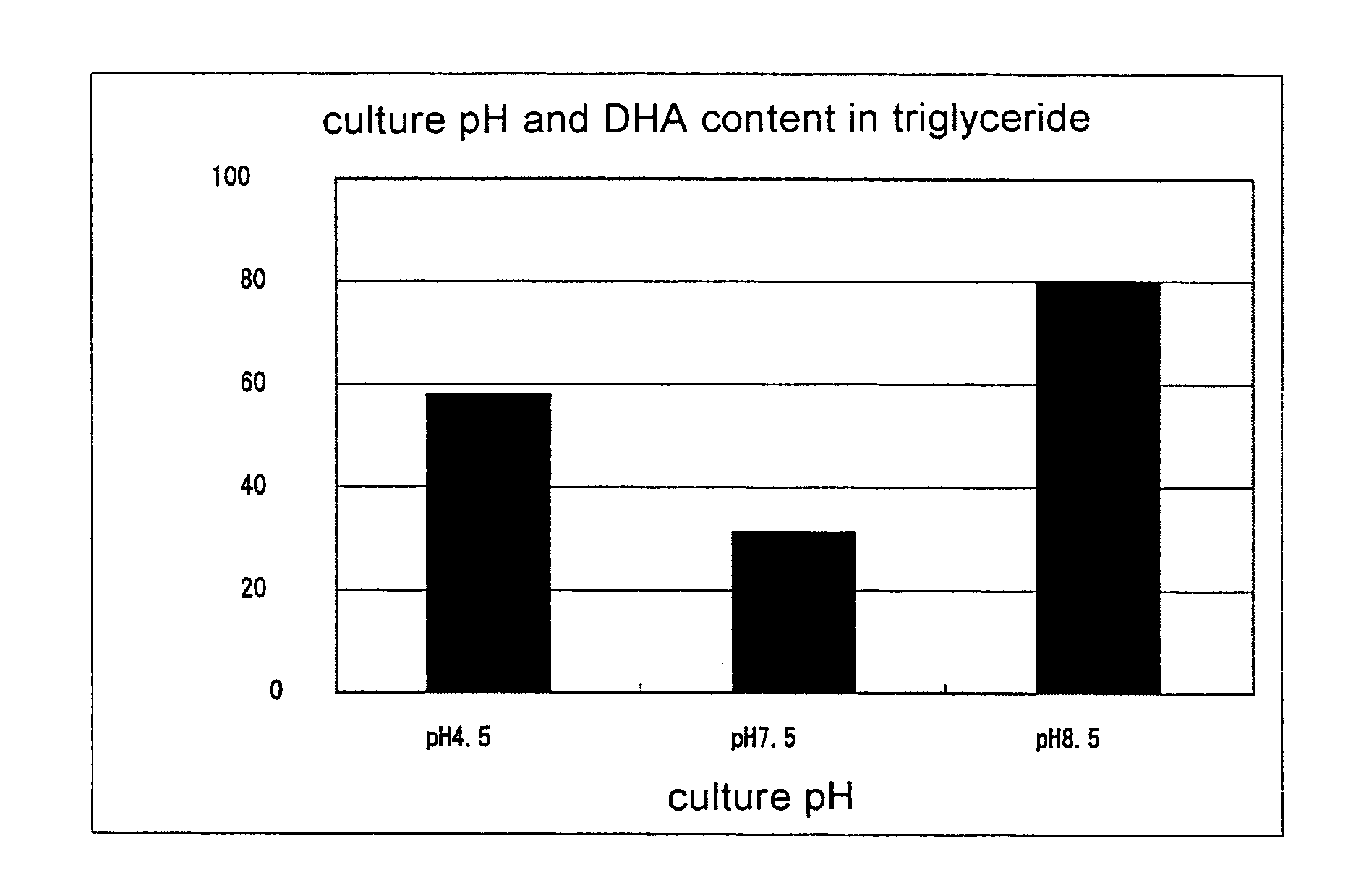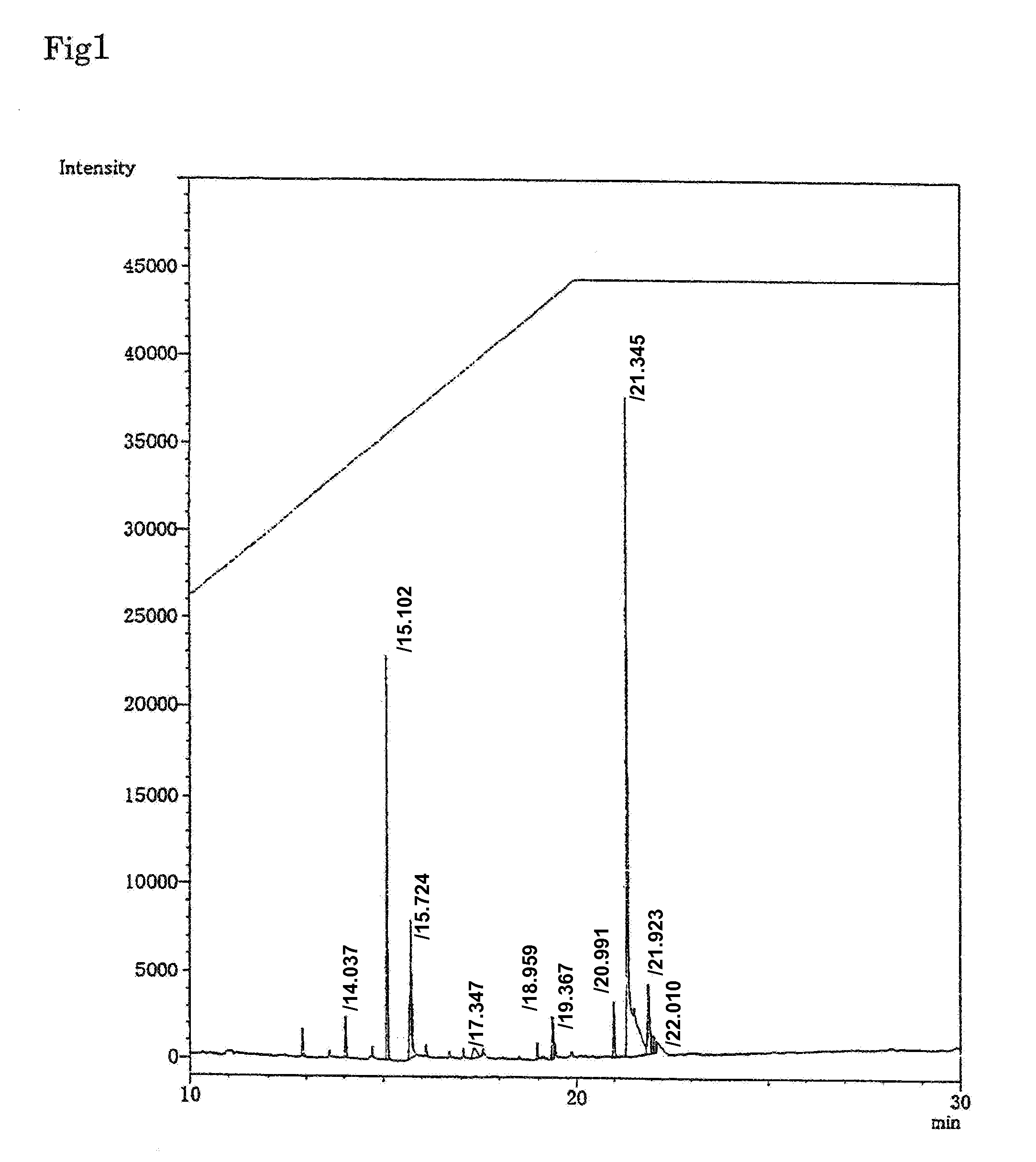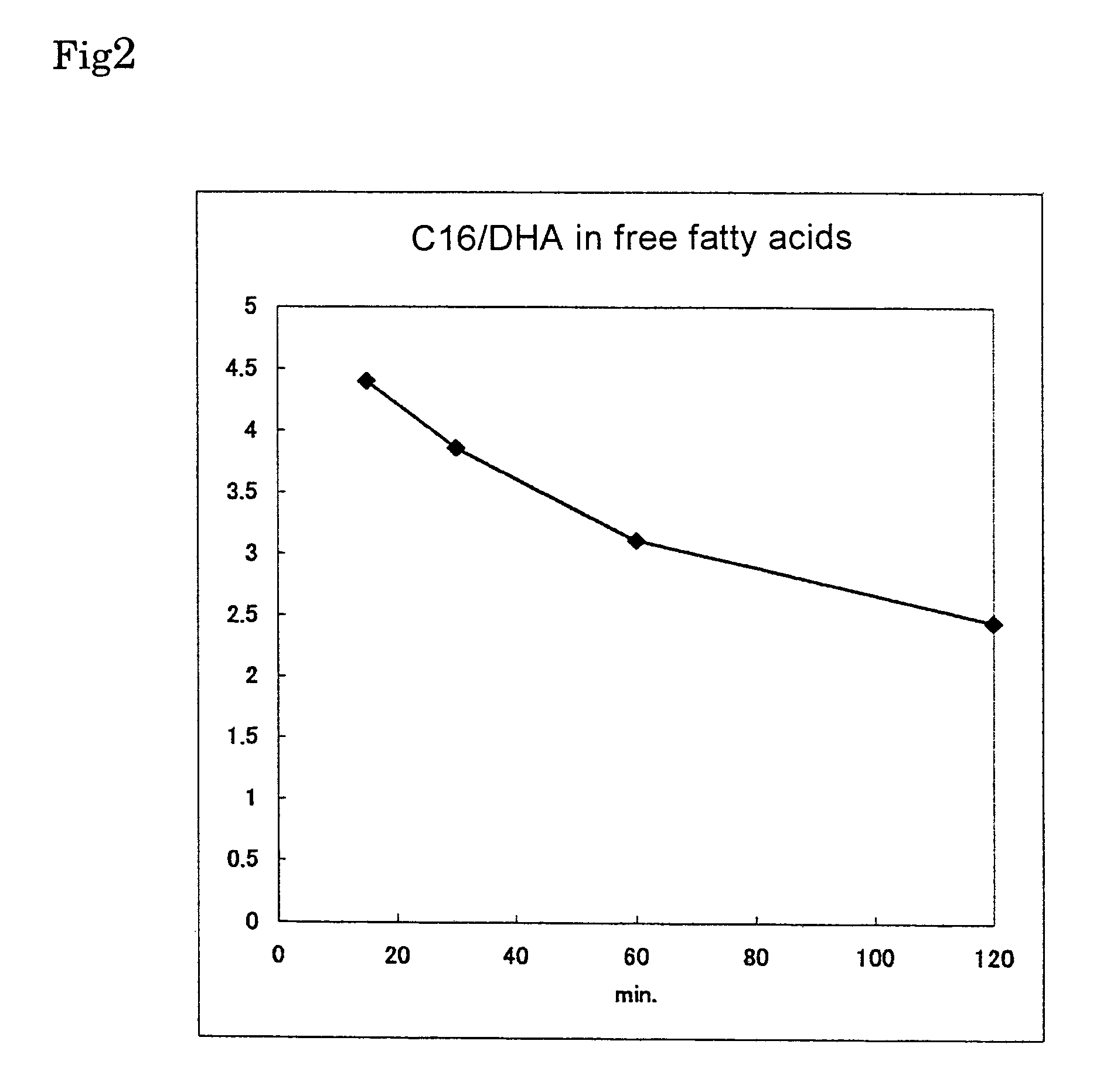Microorganism having an ability of producing docosahexaenoic acid and use thereof
a technology of docosahexaenoic acid and microorganisms, which is applied in the field of microorganisms, can solve the problems of difficult to obtain stable quality fat and oil, difficult separation and purification, and high production cost of docosahexaenoic acid, and achieves the effect of high ability to produce docosahexaenoic acid, efficient production of docosahexaenoic acid, and high yield o
- Summary
- Abstract
- Description
- Claims
- Application Information
AI Technical Summary
Benefits of technology
Problems solved by technology
Method used
Image
Examples
example 1
Isolation and Identification of the LFF1 Strain
[0067] The LFF1 strain was collected from the Seto Inland Sea. The ectoplasmic net of the LFF1 strain extending from spherical cells with diameters of 10 μm to 20 μm can be observed in an adequate agar medium (2% agar medium comprising 3% glucose, 0.5% yeast extract, 0.5% peptone, and 2% synthetic seawater). This strain was recognized to belong to the kingdom Chromista, the class Labyrinthulea, and the family Thraustochytriaceae. The nutritive cells did not exhibit any motility, and they were converted to a polynuclear state through repetition of nuclear divisions not involving cytoplasmic division. Thereafter, they formed zoospores, and these zoospores were extracellularly discharged. Such a life history is characteristic of the genera Thraustochytrim (Olive, L. S., The Mycetozoans, Academic Press, New York, U.S.A., 1975; Daisuke Honda, “Rabirinchura-rui no keito to bunrui (Phylogeny and taxonomy of the Labyrinthula)”, Kaiyo to seibut...
example 2
Production of Fat and Oil Using the LFF1 Strain
[0068] The LFF1 strain was cultured using a jar fermenter under the following conditions to produce fat and oil. The composition of the produced fat and oil was analyzed by gas chromatography.
(1) Culture Conditions:
[0069] use of a 3-liter fermenter;
[0070] amount of culture: 1.8 liters of culture; and
[0071] composition of medium: [0072] 10% glucose; [0073] 3.3% yeast extract; [0074] 50% synthetic seawater; [0075] 0.1% defoaming agent; [0076] 0.2% ammonium acetate; and [0077] 0.2% monobasic potassium phosphate.
[0078] The LFF1 strain for subculture was streaked onto agarose medium and then subjected to standing culture at 28° C. for 4 days. The appeared colonies were then refrigerated.
[0079] Agarose medium: [0080] 3% glucose; [0081] 1% yeast extract; [0082] 50% synthetic seawater; [0083] 0.2% ammonium acetate; [0084] 0.2% monobasic potassium phosphate; and [0085] 1.5% agarose
[0086] The aforementioned colonies were collected and th...
example 3
Conversion to Behenic Acid
[0100] The Labyrinthula oil extract (10 g), which is the total fat and oil produced and extracted in Example 2, was allowed to react in the presence of 0.05 g of stabilized Ni catalyst in 100 ml of ethanol in an autoclave at 150° C. and 2 Mpa for 5 hours. After the reaction, the temperature of the reaction product was cooled to room temperature, and 100 ml of chloroform was added to dissolve the product. Thereafter, the Ni catalyst was removed from this solution by celite filtration, and the solvent was removed by distillation under reduced pressure.
[0101] An aqueous solution of 10% potassium hydroxide (25 ml) and ethanol (50 ml) were added to the hydrogenation product, and the mixture was subjected to reflux while stirring for 30 minutes. After the product was cooled to room temperature, the generated crystal was filtered and then washed with 20 ml of ethanol.
[0102] The obtained crystal was added to 50 ml of water and ethanol mixed in equal proportions,...
PUM
 Login to View More
Login to View More Abstract
Description
Claims
Application Information
 Login to View More
Login to View More - R&D
- Intellectual Property
- Life Sciences
- Materials
- Tech Scout
- Unparalleled Data Quality
- Higher Quality Content
- 60% Fewer Hallucinations
Browse by: Latest US Patents, China's latest patents, Technical Efficacy Thesaurus, Application Domain, Technology Topic, Popular Technical Reports.
© 2025 PatSnap. All rights reserved.Legal|Privacy policy|Modern Slavery Act Transparency Statement|Sitemap|About US| Contact US: help@patsnap.com



